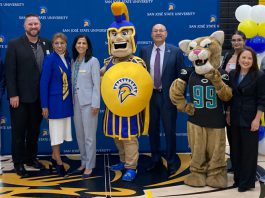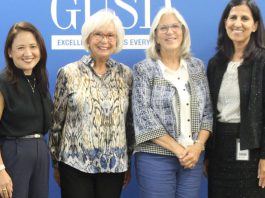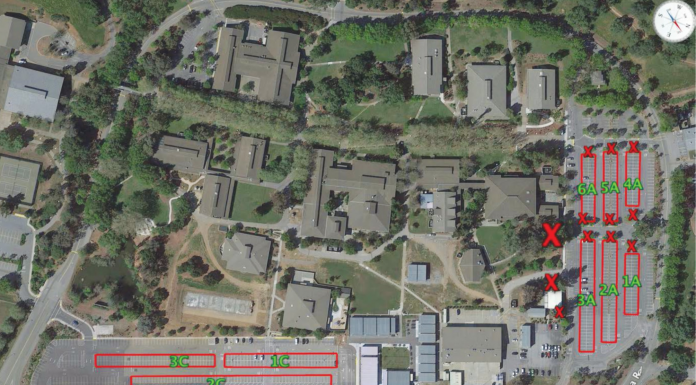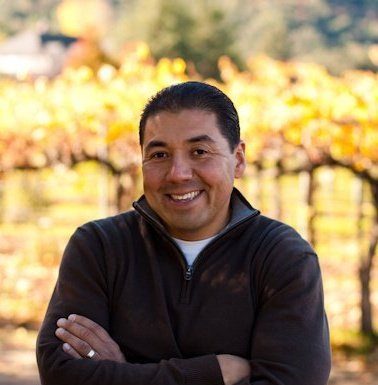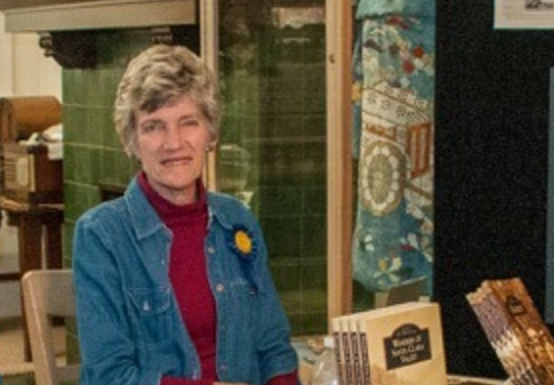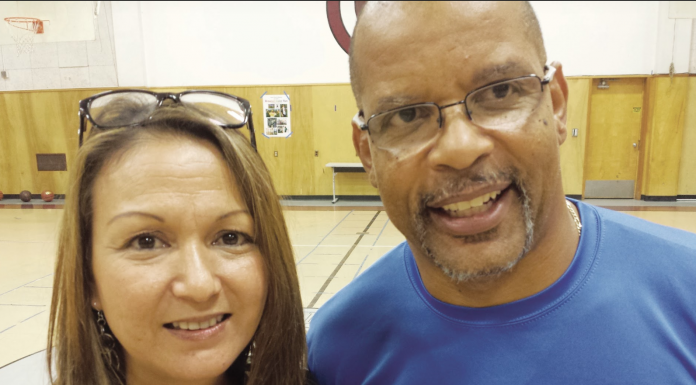Gavilan Goes Solar
Gavilan Community College hopes by the end of 2017 to plug into a powerful new energy source to light and heat the Gilroy campus -- the sun.
Countywide movement to declare schools safe zones
As the Trump Administration enters office, many students, parents, and community members live in fear of harassment, discrimination, and deportation.
SBHS superintendent resigns after reported gun incident
The San Benito High School District has accepted the resignation of former Superintendent John Perales, was charged with brandishing a gun at a person in a car parked outside his Greystone Court house last Oct. 22.
Impressive Moves at Gavilan
Gavilan College is a gem for Gilroy and the surrounding counties and after hearing a report from new President Kathleen Rose we are encouraged with the way the school is growing in new courses, new buildings and a strong spirit of social justice.
CMAP closer to opening
Gilroy’s first combined co-working space and digital media studio is getting ready to open later this month as CMAP (Community Media Access Partnership) puts the finishing touches on its new downtown location.
Here’s what you need to know for the 2017 school year
They will not be adopted until February, but officials this week offered an early peek at Gilroy’s ambitious education goals for 2017, many made possible by one of last year’s big successes: Measure E.
Popular Teacher murdered Christmas Day
Claudia Salewske, who was found beaten to death in her home Christmas morning, was a beloved teacher at Gilroy High School and San Jose State University--and she wrote the definitive book on Gilroy’s history.
Gavilan: Mountain Lion Alert
A mountain lion was spotted on the Gavilan College campus Tuesday and officials sent out an alert for students to be careful.
Basketball Shut Out from School
A popular youth basketball program akin to Little League has been evicted from a Gilroy middle school after a dozen years and will be replaced by Mexican mariachi and folkloric programs and workshops for Spanish-speaking parents.School officials say South Valley Middle School’s programs must get priority and that the nonprofit National Junior Basketball Gilroy-Morgan Hill chapter was alerted to the change but collected fees from parents anyway.Chapter co-founder Shirley Lampkin disputed that they were alerted and said the group’s years of good relations with SVMS went sour only when a new principal refused to continue to rent to them so she could use the gym for the programs she wants for the Latino community.Lampkin said the principal, Patricia Mondragon, “is trying to make a name for herself by saying [she is] going to create all these programs for [her] community, for [her] people.”SVMS is 87 percent Latino and located on Gilroy’s predominantly Latino east side.Lampkin said an equal percentage of the chapter’s nearly 350 players is Latino and comes from “the whole community,” not just the east side. Her husband, Joe, also a chapter co-founder, serves on its volunteer board.While NJB continues to rent gym time at other schools, churches and community centers, the loss of its largest venue at SVMS, with four basketball courts, will mean a hike in fees to parents who already pay about $300 per season.The league has 25,000 players in six states with programs for first-graders through high school and helps families financially.Lampkin said most of its players are from Gilroy and that costs to parents will go up because the school gyms rent for $17 per hour plus custodial fees, while city facilities cost twice that and more.Facility rental now costs the league $1,000 a week, she said, to accommodate all practices and games.Lampkin and KC Adams, NJB Gilroy-Morgan Hill chapter co-founder and president, said they were told another reason for being ousted was friction between the custodial staff and NJB parents.Gilroy Unified School District assistant superintendent Alvaro Meza confirmed there had been such an issue but declined to go into details.Adams said it was about kids milling around waiting to be picked up by parents after hour-long practices, and a parent knocking on a door to find a custodian.Similar issues at Brownell Middle School led to the district forbidding kids from using outdoor courts while waiting for parents, and the district installed video cameras to monitor the players.The league instructed kids and parents not to use outdoor courts and the situation has turned out well, Adams said.He credited Brownell leadership with being more open to working with the league to resolve issues.As for Mondragon, Adams questioned her agenda after she initially rented to the group as its 13th season began, then refused to allow more use. He said the gym has gone unused for weeks and suspects she has not started new programs, at least not yet.Meza said GUSD officials met with the NJB reps, but SVMS programs get first priority.“They have been growing, so they require more basketball courts this year,” he said of the league.“They made one [rental] request that was granted and that was it. They had already collected fees for the entire season without securing the facilities; we are trying to help them [find alternative sites],” he added.Lampkin said the league was never informed in writing of a change to an arrangement they enjoyed for a dozen years and that has benefited so many Gilroy kids who for one reason or another are not allowed to play for school teams.Mondragon said, “We haven’t kicked anybody out.”The NJB, she said, “requested to rent the facilities but unfortunately the facilities are not available. There are different reasons but one of the major reasons is we have our own activities that take precedence.”She said she has added “new initiatives” designed to increase community involvement at the school and they include mariachi teams, a folkloric club and workshops for Spanish-speaking parents.While she said, “I make the decision to bring in more clubs and more parent involvement,” she also said the decision was made “at the district level.”Cheryl Galloway, who schedules the use of all district facilities, said NJB has grown tremendously in recent years and that the district can no longer meet all its demands for practice and game courts.





